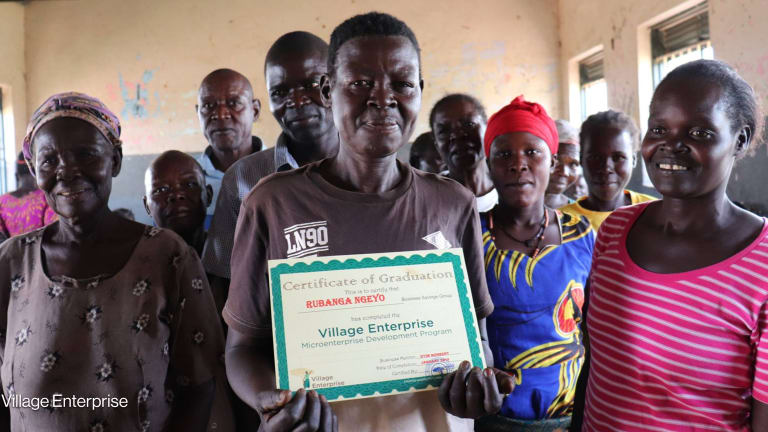
On World Happiness Day, it is worth revisiting the question: Can money buy happiness? Armed with new data-driven evidence from poorest segments of the population in rural Africa, our answer is a resounding yes.
However, this relationship is not straightforward, and has been the subject of considerable debate. More than 2,000 years ago, the Greek philosopher Democritus wrote: “Happiness resides not in possessions, and not in gold, happiness dwells in the soul.” Yet, ask anyone living on less than a dollar a day struggling to put food on the table, and they would probably disagree — income can help alleviate suffering and buy access to basic needs.
Understanding this relationship is of intrinsic and instrumental importance in development. While subjective well-being is an end in itself, it is also linked to better educational and health outcomes, improved social relationships and economic outcomes including productivity, savings, and consumption. Unsurprisingly, happiness has become the focus of scholarship not limited to philosophers but also psychologists, sociologists, and — most recently — economists.
What does research say about the relationship between income and happiness? Studies have generally found subjective well-being rises with income, and this relationship is stronger at lower levels of income. However, a seminal — and contested — paper found that rising incomes fail to make people happier, referred to as the “Easterlin paradox.” The hedonic treadmill explains this phenomenon, suggesting people have a tendency to adapt to circumstances, and return to their base level of happiness. For example, we might be thrilled to get a pay rise, but this effect wears off as we habituate. Another explanation suggests happiness depends upon relative rather than absolute income, as we try to “keep up with the Jones.”
Many studies, however are associational, and cannot infer causality. A way to solve these methodological constraints is to design research studies with the ability to evaluate impacts of simply giving more cash to people and see whether this changes happiness levels. Studies should use methods to confidently infer causality, such as through gold-standard randomized controlled trials. This is exactly what we did.
In two recently released articles, here and here, we examine the impacts of two government-run antipoverty programs: the Child Grant Program in Zambia and the Social Cash Transfer Program in Malawi. Each is an unconditional cash transfer given to poor rural households, but they target very different demographics. In Zambia, the target group was mothers with children under 5 years. In Malawi, transfers were given to primarily elderly caregivers in labor-constrained households. In both settings, the recipients were extremely poor: in Zambia 95 percent were living under the national extreme poverty line, while in Malawi 85 percent were classified as extreme poor.
The programs were surprisingly simple: Every two months, a cash transfer on average accounting for 23-27 percent of preprogram consumption is paid to the household with no strings attached. Recipients were able to use the money however they wished. Results from both programs show impressive impacts — see here and here — on poverty, food security, schooling, productive domains, and material well-being — indicating that cash did in fact make people objectively better off.
But what about the impacts on happiness? Four years after the start of the program in Zambia, the cash transfer increased the proportion of women who generally felt happy by around 14 percent. It also increased women’s satisfaction regarding their children’s well-being, including their children’s health and positive outlook on their children’s future. In Malawi, there were similar encouraging results after just one year of receiving cash; caregivers had a 20 percent higher life satisfaction and were 44 percent more likely to believe their life would be better a couple of years down the road.
What aspects of the cash transfer programs led to these impacts? In Zambia, we investigated the role of two: Absolute and relative poverty. Our objective was to understand if outcomes were more influenced by cash increases per se (ie. what they could actually buy) or because of relative comparisons to their peers (how it made recipients feel). We find that self-assessed relative poverty is a more important mediator of program effects on happiness than absolute poverty. While these dynamics did not extend to Malawi, it is both encouraging and compelling that increases in real happiness could stem from intangible factors — rather than simply a consumption boost.
Certainly, these results are not generalizable to all populations and settings. However, our results show that simple interventions such as cash transfers can change poor individuals’ emotional well-being and outlook on life. This evidence adds to the growing call to place more focus on holistic aspects well-being, putting a “human face” back in development metrics. This is a nice change: Instead of just assuming we know what makes people happy, we can also ask them directly. And, it turns out that a little cash for those in need just might help.










